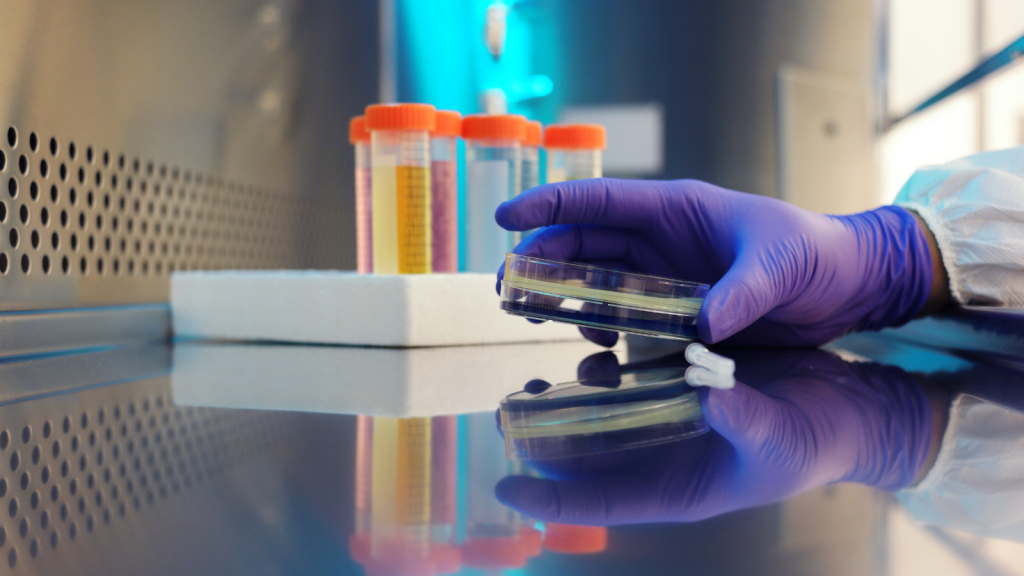Introduction:
The fusion of biology and technology paints a picture of a future where the fundamentals of life are intertwined with innovative science, symbolizing the next phase in humanity’s evolution. Biotechnology, by 2050, promises a world where we are not just observers but master sculptors of nature, diving deep into the molecular architecture of life.
The Alchemy of Bioprinting:
Bioprinting serves as the cornerstone of futuristic biotechnology, employing living cells or ‘bio-inks’ to fabricate biological structures layer by layer. It is like breathing life into inanimate objects, pushing the realms of possibility beyond mere creation. This technological marvel has opened avenues in medical sciences, providing solutions like bioprinted corneas, hair follicles, and organ farms, addressing the chronic issue of donation shortages and enabling personal cosmetic testing and combat wound healing. More advanced applications visualize 3D printed coral reefs restoring damaged marine ecosystems and microgravity-enabled bioprinting stations in space.
Bioengineered Living Architecture:
Biotechnology foresees a convergence with architectural design, constructing buildings with self-repairing and air-cleaning bioengineered materials. The advent of living architecture comes with gecko-inspired adhesives and coral reef-inspired eco-concrete, blending innovation with sustainability. Some structures are powered by biological batteries employing bacteria to generate energy. These advancements pose challenges, with companies manipulating biomaterial lifespan leading to forced obsolescence and continual purchase cycles. Meanwhile, artistic endeavors manifest through Bio Art, with artists utilizing bioprinters and living tissue to create evolving masterpieces, a union of science and artistry.
The Rise of Neo-Humans and Underground Biohacking:
The underground world of biohacking is bustling with cyberpunks and innovators implanting microchips and experimenting with digital inks, digital tattoos, and biocomputers, creating interfaces between technology and living neural tissue. This clandestine community is engineering self-replenishing food containers and editing their genes, transcending biological limitations, and giving birth to ‘neo-humans’ – individuals bioengineered to repel insects, produce a wide range of sounds, display moving images on their skin, and even breathe underwater. These enhancements raise existential questions about the essence of humanity and the ethical boundaries of self-modification.

Advanced Prosthetics and Artificial Wombs:
The realm of artificial biology is crafting advanced prosthetics, integrating seamlessly with the human nervous system, providing natural control and heightened sensory experiences. In tandem, artificial womb technology, or ectogenesis, is being developed as a beacon of hope for a world plagued by infertility, providing reliable external pregnancy solutions. These technological wombs are at the center of various applications from space colonization to endangered species revival, surrounded by controversies and conspiracies related to population control and dictatorial ambitions to create numerous offspring.
Ethical and Environmental Quandaries:
The convergence of biotechnology with ecology brings forth environmental concerns, such as the accidental creation of invasive species through biohybrid robots and bioengineered organisms, potentially disrupting ecosystems and leading to the extinction of native species. The ethical landscape is also under scrutiny, with debates over the ownership of body parts, the implications of unregulated enhancements, and the potential emergence of invasive life forms. The symbiotic relationship between humanity and biotechnology demands responsible innovation to preserve the delicate balance of life on Earth.
Conclusion:
The world of 2050, painted by biotechnology and artificial biology, is a testament to human ingenuity and the pursuit of mastery over nature. From bioprinting innovations and living architecture to biohybrid robots and human enhancements, the boundaries between the organic and the synthetic are becoming increasingly intertwined. This intertwining offers transformative possibilities but also necessitates a profound reflection on the ethical, environmental, and existential implications of recoding life itself. The evolution of biotechnology is not merely a scientific journey but a philosophical exploration into the essence and sanctity of life.
Call to Action:
Stay tuned with BeyondAI Now for more insights into the world of Artificial Biology and join the conversation as we explore the uncharted territories of biotechnology, ponder over the ethical ramifications, and imagine the possibilities of a bioengineered future.